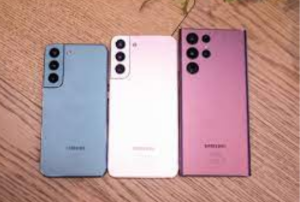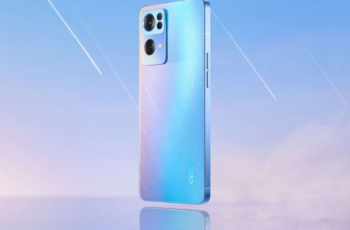Samsung Galaxy S22 and Galaxy S22+
The inclusion of next-generation Dynamic OLED displays in the Samsung Galaxy S22 and Galaxy S22+, both of which will be released later this year, was also confirmed by the Korean company. In the not-too-distant future, we can expect to see the introduction of displays with adjustable refresh rates ranging from 10Hz to 120Hz, with prices starting at around PKR Rs.35270 USD $200.
The company, in contrast to Samsung, did not go back and quietly change its official press release. Apple did not go back and quietly change its official press release, as Samsung did.
Samsung confirmed that the Samsung Galaxy S22 and Galaxy S22+ will both feature next-generation Dynamic OLED displays later this year, following the announcement of next-generation Dynamic OLED displays for the Samsung Galaxy S22 and Galaxy S22+ launch event. The Samsung Galaxy S22 Plus will both feature next-generation Dynamic OLED displays.

Rather than using panels from the previous year, Samsung instead used panels from the previous year that were only capable of stepping down to a maximum frequency of 48 cycles per second.
The Samsung Galaxy S22 Ultra price smartphones had only been available for three days at the time of their launch when Ross Young, the CEO of Display Chain Consultants, noticed that Samsung had made a change to the specifications of the devices.
Because of the use of LTPS panels in these phones, they would have been the first of their kind to operate at a frequency lower than 48Hz, making them the first of their kind to accomplish this feat.
New S-series Samsung Mobile 2022 Price in Pakistan
Samsung Galaxy S22 Ultra specs are disappointing for those looking for a phone that can operate at frequencies as low as one shekel per second, as they fall short of their expectations in this area.
Due to the fact that these devices are only capable of operating at frequencies as low as one hertz and only within a frequency range of 48Hz to 120Hz, their application is restricted to a small number of specific circumstances.
Because of the limitations of their construction, these devices are unable to operate at frequencies greater than 120Hz. Because it is capable of operating at frequencies as low as one hertz and working in conjunction with other devices, the Samsung Galaxy S22 specs are on a completely different level of competition than the rest of the devices in its class (and its LTPO panel).
After it was discovered that an earlier version of the Galaxy S5 specifications had already been archived by the Internet Wayback Machine, it was speculated that Samsung had changed the specifications behind closed doors before releasing the final version of their device to the public.
Although the specifications had been updated, a previous version of the specifications could still be found online at the time this article was published, indicating that the specifications had not been completely phased out by that point.
Besides being used in the marketing of both phones, the original specification sheet has also been used in public reviews of the devices as well as in a variety of other ways to help promote the products even further.
Water Resistance Samsung Galaxy S22 and Galaxy S22+
The S22 Plus specs series of smartphones (including the Samsung Galaxy S22 Plus Price Ultra) as well as the Galaxy S Pen, to name a few examples, are all IP68-rated, according to the manufacturer’s specifications (ingress protection class).
This paper describes the results of a controlled experiment in which participants were submerged in fresh water for up to 30 minutes at a depth of 1.5 meters for a total of 30 minutes under controlled conditions. The experiment was carried out in a controlled environment to ensure accuracy. In order to avoid the high risk of hypothermia during this time of year, it is not recommended that you visit the beach or swim in the pool during this time.
Conclusion:
we tried a few games that we knew could run at more than 60 frames per second. All of these worked as expected, and the Galaxy S22+ changed its display to 120Hz to get the highest possible fps number.
With Samsung’s new GPU Watch overlay, we can now get what is essentially an in-game fps counter or a close approximation to show that the games are running at over 60 fps. Before, we had to guess based on what we could see.

